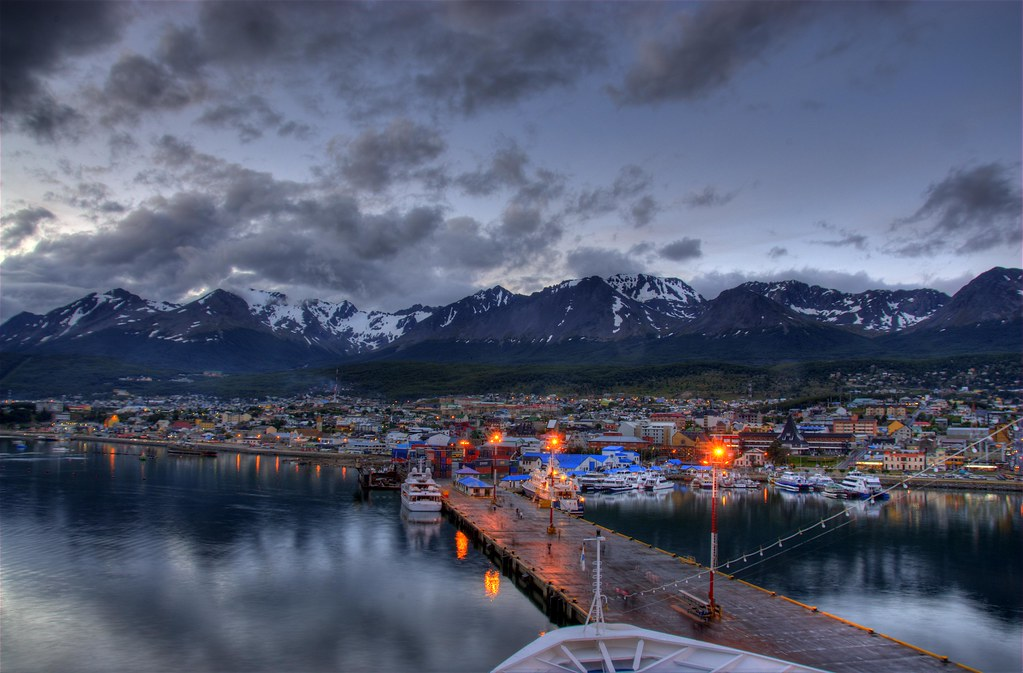History and Culture: Exploring the Indigenous Peoples of Tierra del Fuego
Tierra del Fuego, often referred to as the «end of the world,» is a land of striking landscapes, dramatic weather, and rich history. Nestled at the southern tip of South America, this remote archipelago is known for its glaciers, wind-swept plains, and fjords. But beyond the stunning scenery lies a profound human story that has shaped the region for millennia the history and culture of the indigenous peoples of Tierra del Fuego.
For travelers seeking more than just breathtaking landscapes, exploring the indigenous cultures of Tierra del Fuego offers a deeper connection to the land. These communities, with their unique traditions, ways of life, and history, offer insight into a world far removed from modernity. Despite the challenges brought by colonization and modern development, the legacy of these indigenous peoples continues to live on.

The Indigenous Peoples of Tierra del Fuego
The indigenous groups of Tierra del Fuego have inhabited the region for thousands of years, long before European explorers arrived in the early 16th century. The primary groups who lived in the area are the Selk’nam (Ona), Yamana (Yaghan), and Haush. Each of these groups adapted to the harsh environment in unique ways, developing distinct cultures, languages, and ways of life.
1. Selk’nam (Ona)
The Selk’nam, also known as the Ona, were a nomadic hunting people who lived on the main island of Tierra del Fuego. Their society was deeply rooted in rituals and traditions, with a strong emphasis on their relationship with the natural world. The Selk’nam were known for their impressive hunting skills, particularly their ability to track guanacos, a wild relative of the llama that was crucial to their survival.
One of the most striking aspects of Selk’nam culture was their initiation ceremony, known as the Hain, which was a rite of passage for young men. The ceremony involved elaborate body painting and the wearing of masks, with men portraying powerful spirits from their mythology. This ritual was not only a significant cultural tradition but also a means of maintaining social order within the community.
Unfortunately, the Selk’nam faced near extinction due to European colonization, which brought disease, land displacement, and violence. Despite these tragedies, the memory of the Selk’nam people lives on through archaeological sites, oral histories, and cultural preservation efforts.
2. Yamana (Yaghan)
The Yamana, or Yaghan people, lived in the coastal regions and islands of Tierra del Fuego. Unlike the Selk’nam, who were primarily hunters, the Yamana were expert navigators and fishermen. They lived in small, family-based groups and traveled in canoes along the coast, hunting seals, sea lions, and gathering shellfish. The cold, harsh environment meant that the Yamana often lived a semi-nomadic lifestyle, moving frequently in search of food.
One of the most remarkable aspects of Yamana culture was their ability to survive in such extreme conditions with little clothing. Instead of relying on heavy garments, the Yamana smeared their bodies with animal fat to insulate themselves from the cold, and they built simple shelters to protect against the fierce winds and rain.
The Yamana also had a rich spiritual life, with a belief system centered around the natural world and the spirits of their ancestors. Like the Selk’nam, the arrival of Europeans dramatically altered their way of life. Today, the Yamana population is very small, but efforts are being made to preserve their language and cultural heritage.
3. Haush
The Haush people, another indigenous group of Tierra del Fuego, lived in the eastern part of the main island. Closely related to the Selk’nam, the Haush were also skilled hunters and gatherers, relying on guanacos and other game for their sustenance. Their way of life was shaped by the rugged terrain and the challenging climate of Tierra del Fuego, and like the other indigenous groups, they developed unique cultural traditions that reflected their environment.
The Haush were known for their storytelling and oral traditions, which helped preserve their history and cultural identity through generations. However, like the Selk’nam and Yamana, the Haush faced near extinction as European settlers encroached on their lands.
European Contact and the Decline of Indigenous Populations
The arrival of Europeans, starting with explorers like Ferdinand Magellan in the early 1500s, had a devastating impact on the indigenous populations of Tierra del Fuego. The colonization of the region brought diseases that the indigenous peoples had no immunity to, such as smallpox, which decimated their populations. Additionally, European settlers, particularly sheep ranchers and gold prospectors, claimed indigenous lands, leading to violent conflicts and further displacement.
Missionaries, too, played a complex role in the history of Tierra del Fuego’s indigenous peoples. While they aimed to convert and «civilize» the native populations, their presence often disrupted traditional ways of life. In some cases, missionaries provided shelter and protection to indigenous groups, but their efforts to assimilate the local populations into European customs also contributed to the erosion of indigenous cultures.
Despite these challenges, the story of the indigenous peoples of Tierra del Fuego is not entirely one of loss. Today, there are ongoing efforts to revive and preserve the cultural heritage of the Selk’nam, Yamana, and Haush. Museums, cultural centers, and indigenous organizations in Argentina and Chile are working to ensure that the history and traditions of these peoples are not forgotten.
Exploring Indigenous Culture in Tierra del Fuego Today
For travelers seeking to connect with the history and culture of Tierra del Fuego, there are several ways to explore the legacy of its indigenous peoples.
1. Visit Cultural and Archaeological Sites
Tierra del Fuego is home to numerous archaeological sites that offer insight into the lives of its original inhabitants. Visitors can explore areas where the Selk’nam, Yamana, and Haush once lived, hunted, and conducted their rituals. Some of these sites have been carefully preserved and are accessible through guided tours.
One of the most notable places to visit is Ushuaia, the capital city of Tierra del Fuego, where museums such as the Museo del Fin del Mundo and the Museo Yamana offer exhibits on the indigenous history of the region. These museums feature artifacts, photographs, and narratives that tell the story of the indigenous peoples who once thrived in this harsh yet beautiful landscape.
2. Learn from Local Guides
Many luxury tour operators, like Patagon Mountain Agency, offer exclusive cultural experiences that allow travelers to connect with the region’s indigenous heritage. Guided tours led by local experts provide deep insights into the history, myths, and traditions of the Selk’nam, Yamana, and Haush peoples. These immersive experiences offer a rare opportunity to see the world through the eyes of those who have lived in Tierra del Fuego for thousands of years.
For example, a guided trek through the Patagonian wilderness might include a visit to traditional hunting grounds or sacred sites, where travelers can learn about the spiritual and cultural significance of the land. This kind of experience provides a deeper, more meaningful understanding of Tierra del Fuego’s past and present.
3. Support Indigenous-Led Initiatives
Today, several indigenous organizations and community initiatives are working to preserve the languages, traditions, and history of the Selk’nam, Yamana, and Haush peoples. By supporting these efforts, travelers can contribute to the ongoing revitalization of these cultures.
Some tour operators and hotels in Tierra del Fuego are actively partnering with indigenous communities, offering experiences that not only highlight the region’s natural beauty but also emphasize the importance of cultural preservation. These partnerships ensure that tourism benefits the local population and contributes to the sustainability of indigenous traditions.
The Legacy of Tierra del Fuego’s Indigenous Peoples
The history of Tierra del Fuego’s indigenous peoples is a testament to human resilience and adaptability. For thousands of years, the Selk’nam, Yamana, and Haush lived in harmony with one of the most challenging environments on Earth, developing rich cultures that were deeply connected to the land. Though their populations were severely impacted by European colonization, their legacy endures in the form of stories, traditions, and ongoing efforts to preserve their heritage.
For those looking to explore the soul of Tierra del Fuego, connecting with its indigenous history offers a journey far deeper than the stunning landscapes. It provides an opportunity to learn about the ancient peoples who called this remote corner of the world home and to understand the importance of preserving their cultures for future generations. To discover more about the indigenous cultures of Tierra del Fuego and embark on exclusive cultural expeditions, visit Patagon Mountain Agency. Their bespoke tours offer a unique blend of adventure and cultural immersion, providing travelers with an unforgettable experience at the «end of the world.»



